The 30 Best Elementary Schools in California: Comprehensive Guide for Parents

California hosts over 8,400 elementary schools across its diverse regions, serving millions of students from Los Angeles to San Francisco.
The state’s educational landscape includes traditional public schools, charter institutions, and specialized programs that consistently rank among the nation’s best performers.
Parents seeking exceptional elementary education for their children will find California’s top-performing schools span from urban centers to suburban communities, each offering distinct approaches to academic excellence.
These institutions demonstrate strong performance across standardized assessments, innovative teaching methods, and comprehensive support systems that prepare students for future academic success.
Here are the 30 best elementary schools in California:
1. William Faria Elementary School, Cupertino
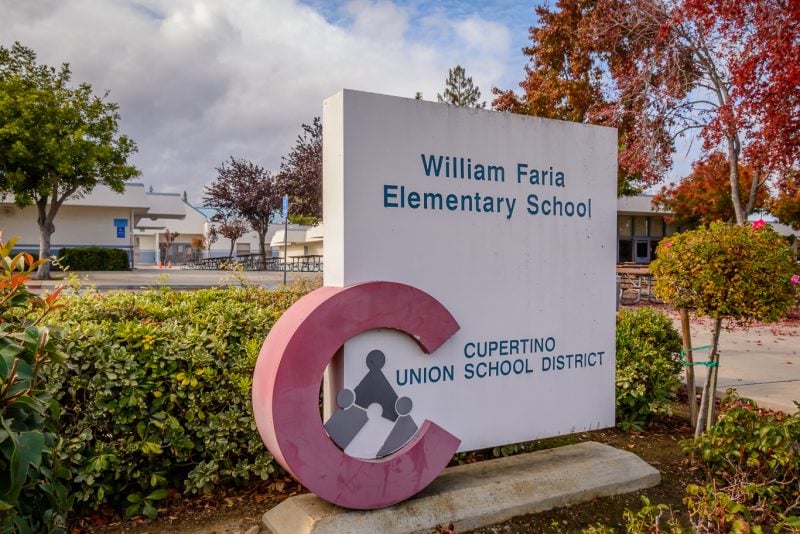
William Faria Elementary School stands as one of California’s premier educational institutions. The public school serves 604 students in grades K-5 within the Cupertino Union School District.
The school consistently ranks in the top 1% of all public elementary schools in California. U.S. News & World Report placed William Faria Elementary third among the state’s best elementary schools.
Academic performance remains exceptional across core subjects. State test scores show 98% of students achieve proficiency in mathematics and 95% in reading.
The school maintains a student-teacher ratio of 24 to 1. This ratio supports classroom instruction and student engagement throughout the academic year.
William Faria Elementary operates as one of 19 elementary schools in the highly-rated Cupertino Union School District. The district ranks 41st out of 1,568 districts statewide, contributing to the school’s strong educational foundation.
2. Herbert Hoover Middle School, San Jose (Grade 6)

Herbert Hoover Middle School stands among California’s top-performing institutions. The school has earned recognition in statewide rankings for its academic excellence.
Located in San Jose, the school serves a diverse student population. The institution maintains strong academic standards across all grade levels.
Herbert Hoover Middle demonstrates consistent performance in standardized testing. Students receive comprehensive education in core subjects including mathematics, reading, and science.
The school operates within the San José Unified School District. Faculty members provide structured learning environments that support student achievement.
Parents can schedule appointments to visit the campus during regular business hours. The school maintains open communication with families throughout the academic year.
Herbert Hoover Middle has established itself as a notable choice for families seeking quality public education in the San Jose area.
3. Argonaut Elementary School, Saratoga
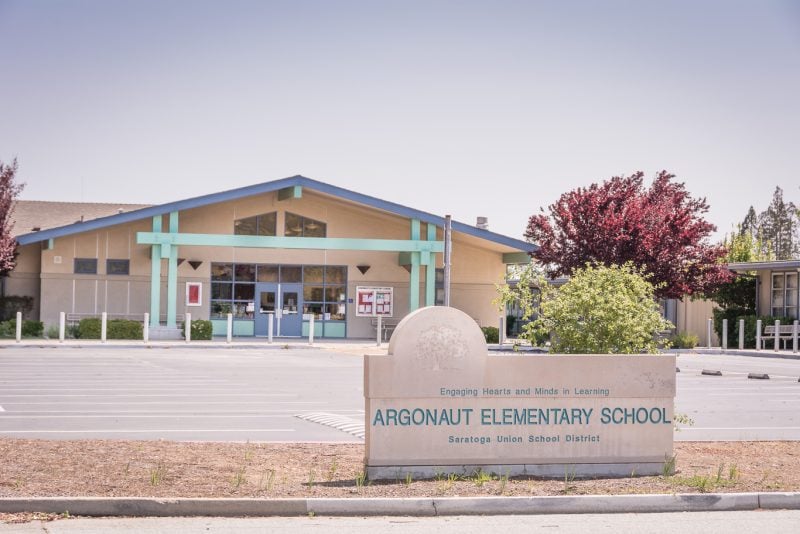
Argonaut Elementary School serves students in Saratoga’s diverse educational landscape. The school operates within the Saratoga Unified School District system.
Located in Saratoga, Argonaut Elementary provides educational services to local families. The school follows California state curriculum standards and district guidelines.
Saratoga contains 77 elementary schools serving students from kindergarten through various grade levels. This creates a competitive educational environment with multiple options for families.
The Saratoga Unified School District oversees 72 elementary schools with varying academic performance levels. Schools in the district span a wide range of achievement outcomes.
Argonaut Elementary accepts applications through the district’s enrollment process. Families can obtain detailed information about tuition, application procedures, and student services through official channels.
The school serves students within Saratoga’s educational framework alongside other public elementary institutions in the city.
4. Bullis Charter School, Los Altos
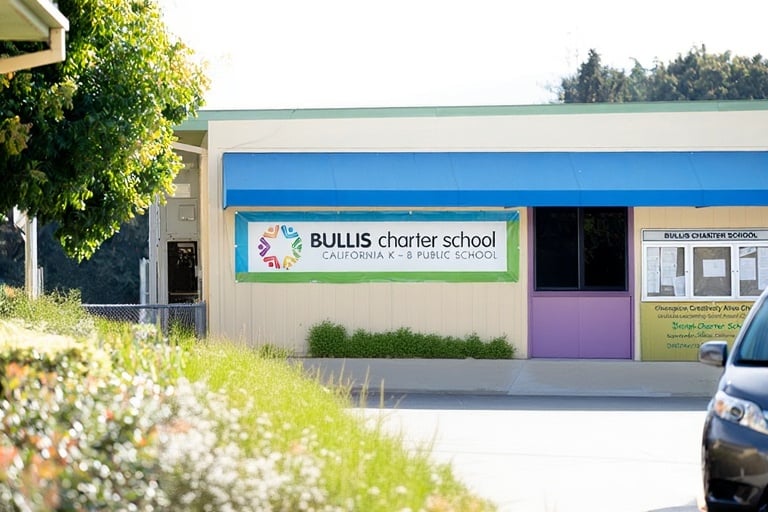
Bullis Charter School ranks among the top 1% of all public schools in California. The school serves approximately 1,025 students in grades TK through 8 in Los Altos.
The charter school maintains a 5-star rating from School Digger. It consistently ranks among the top 10-12 elementary schools statewide.
Bullis Charter operates as a free public charter school open to any California student in the eligible grade levels. The school maintains a student-to-teacher ratio of 14.7 to 1 with about 70 full-time teachers.
Located in Los Altos, the school serves students in a large suburban setting. As a charter school, it functions within the Santa Clara County Office of Education district structure.
The school’s academic performance places it among California’s highest-performing elementary institutions.
5. Sleepy Hollow Elementary School, Orinda
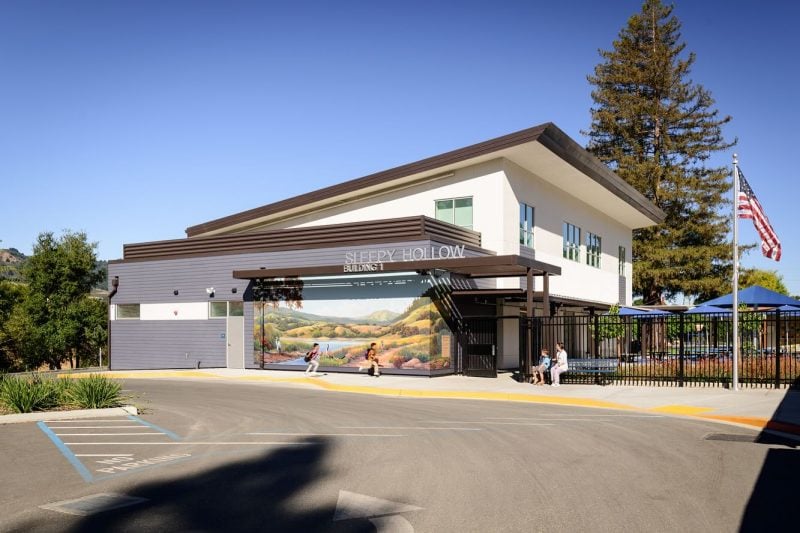
Sleepy Hollow Elementary School serves the Orinda community. The school operates as part of the Orinda School District.
Located in the scenic Sleepy Hollow neighborhood, the school provides elementary education to local families. Orinda’s elementary schools consistently rank well statewide.
The school benefits from Orinda’s strong community support and educational resources. Parents in the area have access to both public and private elementary school options.
Mill Valley’s location in Orinda provides students with access to outdoor learning opportunities. The community places high value on academic achievement and student development.
Sleepy Hollow Elementary reflects the educational standards typical of Orinda schools. The school serves families seeking quality elementary education in a suburban setting.
6. Cupertino Language Immersion Program

The Cupertino Language Immersion Program (CLIP) serves nearly 600 students in grades K-8 within the Cupertino Union School District. This two-way immersion program provides instruction in both English and Mandarin Chinese.
CLIP operates as the oldest public Mandarin immersion program in California and the second oldest in the United States. Elementary students attend classes at John Muir Elementary School for grades K-5.
The program earned recognition as a 2023 California Distinguished School. Students develop proficiency in understanding, speaking, reading, and writing both languages through structured immersion instruction.
CLIP’s mission focuses on preparing students for a global workplace by building bilingual competency and cultural awareness. The program emphasizes intellectual flexibility and lifelong learning skills through its dual-language approach.
7. Bridges Academy, San Diego

Bridges Academy ranks within the top 30% of all public schools in California. The school serves students in grades 6-8, focusing on middle school education rather than elementary levels.
Located in Lemoore, CA, the academy maintains a small student body of just 7 students. This exceptionally low enrollment creates an intimate learning environment with personalized attention.
The school’s academic performance places it among California’s higher-performing institutions. Students benefit from individualized instruction due to the minimal class sizes.
Bridges Academy operates as a public school within California’s educational system. The institution emphasizes academic excellence while maintaining its selective enrollment approach.
The school’s location provides access to central California’s educational resources. Faculty members can dedicate significant time to each student’s academic development and progress.
8. Belmont Oaks Academy, Belmont
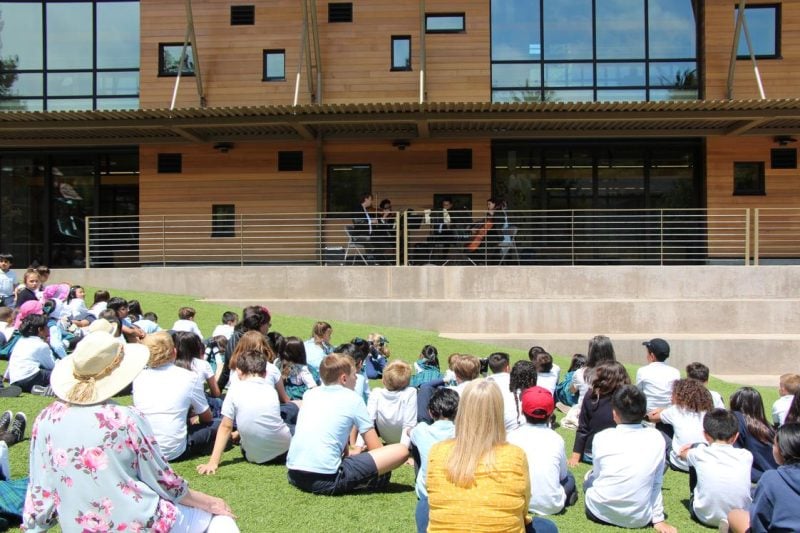
Belmont Oaks Academy stands as one of California’s top-ranked private elementary schools. Founded in 1948, it serves as Belmont’s oldest independent educational institution.
The school enrolls approximately 346-392 students from prekindergarten through fifth grade. It maintains a favorable student-to-teacher ratio of 13:1 with 17 full-time teachers on staff.
Located at 2200 Carlmont Drive in Belmont, the academy ranks within the top 20% of private schools statewide. The school also operates Merry Moppet Preschool as part of its early childhood education program.
Belmont Oaks Academy is one of 11 private elementary schools serving the Belmont area. The institution focuses on providing quality education for young learners in the San Francisco Bay Area.
9. John Muir Elementary School, Pasadena

John Muir Elementary School serves students in kindergarten through fifth grade in the Pasadena Unified School District. The school operates as part of a district that includes 11 elementary schools throughout the city.
The school maintains smaller class sizes with typically two classes per grade level. This structure creates a more intimate learning environment where students and families can develop closer connections.
John Muir Elementary focuses on providing foundational academic skills across core subject areas. The school serves families within its designated attendance boundary in Pasadena.
Parents and community members can access information about school performance, enrollment procedures, and academic programs through district resources. The school participates in state testing and assessment programs required for California public schools.
The campus provides standard elementary school facilities including classrooms, playground areas, and administrative offices. Students have access to educational resources and materials aligned with California state standards for their respective grade levels.
10. Oak Knoll Elementary School, Menlo Park

Oak Knoll Elementary School serves 582 students in grades Kindergarten through 5. The school ranks in the top 5% of all California schools for overall test scores.
Both math and reading proficiency rates place Oak Knoll in the top 5% statewide. These strong academic results demonstrate consistent educational excellence across core subjects.
The school operates within Menlo Park’s diverse educational landscape. Oak Knoll stands out among the city’s 67 elementary schools through its high performance metrics.
Students at Oak Knoll benefit from programs that support academic achievement across all grade levels. The school maintains its reputation through sustained focus on student learning outcomes.
Oak Knoll’s location in Menlo Park provides access to urban resources while maintaining a focused learning environment. The school’s performance data reflects effective teaching practices and student engagement.
11. Olivewood Elementary School, Irvine
Olivewood Elementary School serves students in grades K-6 within the Irvine Unified School District. The school operates as part of one of California’s highest-performing districts.
The Irvine Unified School District ranks 108th out of 1,568 districts statewide. This district maintains a 5-star rating from SchoolDigger.
Olivewood Elementary follows the district’s academic standards and curriculum framework. Students receive instruction in core subjects including mathematics, English language arts, science, and social studies.
The school participates in district-wide assessment programs that monitor student progress. Teachers use data-driven instruction methods to support student achievement.
Olivewood Elementary benefits from Irvine’s strong community support for education. The school maintains facilities that support various educational programs and activities for elementary-aged students.
12. Silver Spur Elementary School, Palos Verdes
Silver Spur Elementary School operates within the highly-rated Palos Verdes Peninsula Unified School District. The district maintains exceptional standards with all elementary schools ranking in the top 10% of California.
The school focuses on providing rigorous education through a balanced literacy approach. Teachers implement workshop model instruction for reading and writing development.
Silver Spur emphasizes nurturing the whole child within its learning community. The faculty uses state-of-the-art teaching methods to deliver comprehensive education.
The Palos Verdes Peninsula district demonstrates strong academic performance metrics. Elementary schools in the district average a 10/10 ranking, placing them in California’s top 5%.
Student demographics show 57% minority enrollment with Asian students comprising the majority. This diversity contributes to the school’s educational environment.
The district maintains low chronic absenteeism rates and favorable student-teacher ratios. These factors support the strong academic outcomes achieved throughout the system.
13. Cherry Chase Elementary School, Sunnyvale
Cherry Chase School serves students in Sunnyvale, California, as part of the local elementary school system. The school operates within a district known for strong academic performance across multiple campuses.
Sunnyvale elementary schools maintain an average ranking of 9 out of 10. This places them in the top 20% of California public elementary schools statewide.
The student population at Sunnyvale elementary schools reflects significant diversity. Minority enrollment reaches 80% of the student body, with Asian students representing the majority demographic.
Cherry Chase Elementary benefits from the competitive educational environment in Sunnyvale. The city’s elementary schools consistently demonstrate strong test scores and academic achievement levels.
The school serves families in a community that prioritizes educational excellence. Parents choose Cherry Chase Elementary for its commitment to student success and academic rigor.
14. Vargas Elementary School, Sunnyvale
Vargas Elementary School serves students in the Sunnyvale Unified School District. The school is part of a district that includes 17 elementary schools serving prekindergarten through 5th grade.
The Sunnyvale Unified School District generally performs above California state averages in academic achievement. This provides a strong educational foundation for students across the district’s schools.
Sunnyvale is home to 20 elementary schools total, including both Sunnyvale Unified and Los Angeles Unified School District campuses. The city’s schools benefit from the area’s commitment to public education.
Vargas Elementary operates within a district known for its diverse student population. The school follows standard elementary curriculum guidelines for California public schools.
The Sunnyvale area offers families multiple elementary school options. Parents can research test scores, teacher quality, and student-teacher ratios when evaluating schools in the district.
15. Moreland Elementary School, San Jose
Moreland Elementary School operates within the Moreland School District in San Jose, California. The district serves students from kindergarten through eighth grade in this large city setting.
The Moreland School District ranks 260 out of 1,568 districts statewide in California. This places it in the upper tier of California school districts for academic performance.
San Jose elementary schools maintain an average ranking of 8 out of 10. This rating puts them in the top 30 percent of California public elementary schools.
The district encompasses six elementary schools serving kindergarten through fifth grade students. These schools demonstrate varying levels of academic achievement across the district.
Minority enrollment represents 88 percent of the student body in San Jose elementary schools. The majority Hispanic population exceeds the California public elementary school average of 79 percent.
The Moreland West neighborhood schools achieve a 50 percent performance score compared to the statewide average of 35 percent.
16. Ruth Acty Elementary, Berkeley
Ruth Acty Elementary is a public K-5 school with about 395-400 students enrolled. The student–teacher ratio is roughly 20.8 to 1, so class sizes are moderately large.
The school is quite diverse: around 39% of students are White; ~27% identify as two or more races; ~17% are Hispanic; ~9% are Asian; ~8% are African American; and a very small percentage are Native American. About 5-6% of students are English Learners.
Approximately 17% of students qualify for free or reduced-price lunch, which is relatively low compared to many public schools in similar urban areas.
Academic performance is strong, students tend to perform well above average in English Language Arts and Mathematics compared to district and state metrics.
The school is known for its supportive teaching staff, engaged parents, and a school mission that emphasizes academic, social, emotional, and ethical development.
17. Fairmeadow Elementary School, Palo Alto
Fairmeadow Elementary School ranks within the top 5% of all public schools in California. The school serves 441 students in grades kindergarten through fifth grade.
Located in Palo Alto, Fairmeadow operates as part of the Palo Alto Unified School District. It is one of 15 elementary schools in this district.
The school maintains a student-to-teacher ratio of 21.0 students per teacher. This ratio allows for focused classroom instruction across all grade levels.
Fairmeadow consistently demonstrates exceptional academic performance compared to other California elementary schools. The school’s test scores and academic metrics place it among the state’s highest-performing elementary institutions.
The school is situated at 500 E. Meadow Dr. in Palo Alto’s small city setting. Students benefit from the educational resources and community support available in this location.
18. North Star Academy, Redwood City
North Star Academy serves students in the Redwood City area as part of the broader educational landscape in San Mateo County. The school operates within one of five school districts that collectively serve the Redwood City community.
Redwood City’s elementary schools benefit from the region’s commitment to educational excellence. The city hosts 22 schools across elementary, middle, and high school levels.
The Redwood City School District emphasizes creating safe and inclusive environments for all learners. Each school within the district offers programs designed to meet diverse student needs.
Parents in the Sequoia area have access to both public and private elementary school options. The local school district focuses on academic achievement while providing enriching extracurricular opportunities.
North Star Academy participates in the broader educational mission of fostering student growth and development. The school serves families seeking quality elementary education in the Redwood City region.
19. Waverly Drive Elementary School, San Mateo
Waverly Drive Elementary School serves students in the San Mateo-Foster City School District. The school operates within one of California’s top-performing elementary education regions.
San Mateo County elementary schools maintain strong academic standards. The county’s schools average high rankings compared to other California public elementary institutions.
The school benefits from San Mateo’s commitment to quality education. The city consistently ranks among areas with excellent elementary school options.
Waverly Drive Elementary follows California state curriculum standards. Students receive instruction in core subjects including mathematics, English language arts, science, and social studies.
The school serves a diverse student population typical of San Mateo area schools. This diversity reflects the broader demographic composition of the region.
Parents in the San Mateo area have access to multiple high-quality elementary school choices. Waverly Drive Elementary contributes to the district’s reputation for academic excellence.
20. Montclair Elementary School, Oakland
Montclair Elementary School serves 534 students in grades K-5 within the Oakland Unified School District. The school maintains a student-teacher ratio of approximately 22.5 to 1.
The school offers a Gifted & Talented program for qualifying students. Located at 1757 Mountain Boulevard, Montclair Elementary operates as a public school in Oakland’s large city setting.
The school’s mission emphasizes rigorous and collaborative learning experiences. They focus on creating safe and inclusive environments that honor student diversity and build community connections.
Montclair Elementary functions as a community school that serves families throughout Oakland and surrounding areas. The school promotes global citizenship development alongside local community engagement.
The Oakland Unified School District provides bilingual education opportunities and STEAM programs. Students can participate in music, sports, and language learning activities as part of their educational experience.
21. Borel Middle School, San Mateo (Grade 6)
Borel Middle School serves 934 students in grades 6-8 in San Mateo, California. The school operates as part of the San Mateo-Foster City School District.
The school ranks within the top 30% of all public schools in California. It functions as a magnet school offering a Gifted & Talented program.
Student performance shows 42% of students are at least proficient in math and 56% in reading according to state test scores. The school maintains a student-teacher ratio of 19 to 1.
Borel Middle School has a free and reduced lunch rate of 30.89%. This indicates the socioeconomic makeup of the student population.
The school is one of seven middle schools in the San Mateo-Foster City School District. It is located in a mid-size city setting within San Mateo.
22. Delmar Burkes School, San Francisco
Delmar Burkes School serves students in San Francisco’s diverse educational landscape. The school operates within a district where elementary schools maintain strong academic performance standards.
San Francisco elementary schools typically achieve an average ranking of 8/10 statewide. This places them in the top 30% of California public elementary schools.
The student body reflects San Francisco’s multicultural composition. Minority enrollment reaches 85% across the district’s elementary schools, with Hispanic and Asian students representing the majority populations.
Delmar Burkes Elementary participates in San Francisco’s comprehensive public education system. The school focuses on providing quality instruction while serving its local community needs.
Teachers and staff work to maintain academic standards consistent with the district’s overall performance metrics. The school contributes to San Francisco’s reputation for educational excellence in the Bay Area region.
23. Sycamore Elementary School
Sycamore School stands as a premier independent elementary institution in Orange, California. The school serves students from kindergarten through eighth grade with a focus on academic excellence and character development.
The campus features modern facilities designed to support innovative learning approaches. Small class sizes allow teachers to provide individualized attention to each student’s unique needs and learning style.
Sycamore School emphasizes hands-on learning experiences across all subject areas. Students engage in project-based learning that connects classroom concepts to real-world applications.
The school’s location in Portola Valley provides access to natural outdoor learning environments. Students regularly participate in environmental science programs and outdoor education activities.
Faculty members hold advanced degrees and bring extensive experience in elementary education. The school maintains high academic standards while fostering creativity and critical thinking skills in its student body.
24. Fremont Elementary School, Los Angeles
Fremont Elementary School stands as a distinguished institution in the Los Angeles area. The school has earned recognition as a three-time Title I Achieving School.
The school received the California Distinguished School award twice. It also earned the Governor’s Performance Award on two separate occasions.
Fremont Elementary operates a notable Dual Language Immersion Program. This program has received multiple accolades from both the City of Alhambra and County of Los Angeles.
The school serves students in a diverse educational environment. Its track record demonstrates consistent academic achievement and program excellence.
Fremont’s multiple awards reflect its commitment to educational quality. The school maintains high standards across its various programs and initiatives.
25. Montara Avenue Elementary School
Montara Elementary School serves students in kindergarten through fifth grade in the coastal community of Montara, California. The school operates within a small district that focuses on elementary education.
The school maintains standard elementary programming with age-appropriate curriculum for its student population. Teachers work with students across the primary grade levels to build foundational academic skills.
Montara’s location near the Pacific Coast provides a unique setting for the school community. The rural coastal environment offers students access to natural surroundings that complement their educational experience.
The school serves families in the Montara area who seek local elementary education options. Parents in this community can access school performance data and rankings through various educational rating websites.
Montara Elementary participates in state testing programs and follows California educational standards. The school’s performance metrics are available through official state education department resources.
26. Lagunitas Elementary School
Lagunitas Elementary School ranks within the top 20% of all public schools in California. The school serves 80 students in grades kindergarten through eighth grade.
Located in San Geronimo, the school demonstrates strong academic performance. State test results show solid proficiency rates in both mathematics and reading.
The institution operates as part of the two-school Lagunitas Elementary District. It consistently outperforms its district counterpart with higher statewide rankings and better attendance rates.
Lagunitas Elementary maintains a student-teacher ratio of 19 to 1. The school emphasizes community-focused education that supports students academically, socially, and emotionally.
The campus promotes collaborative learning among students, families, and local partners. This approach creates an inclusive environment designed to help every child succeed.
27. Blue Oak School, Napa
Blue Oak Elementary School serves students in Napa, California. The school operates within the Napa area’s educational system.
The school provides elementary education with a focus on core academic subjects. Students receive instruction in mathematics, reading, language arts, and science.
Blue Oak maintains standard classroom facilities typical of California public elementary schools. The campus includes instructional spaces designed for elementary-age learners.
The school follows California state curriculum standards and assessment requirements. Teachers work to prepare students for academic advancement to middle school levels.
Napa’s elementary schools serve a diverse student population. Blue Oak Elementary contributes to the district’s educational offerings in the region.
The school participates in district-wide programs and initiatives. Staff members work to support student learning and development across grade levels.
28. El Cerrito High School (elementary program), El Cerrito
El Cerrito High School operates within the West Contra Costa Unified School District. The school is located at 540 Ashbury Avenue in El Cerrito, California.
The institution serves grades 9-12 as its primary function. However, it offers some educational programs that extend beyond traditional high school boundaries.
The school utilizes partial virtual instruction methods. This means students receive a combination of in-person and online learning opportunities.
El Cerrito High School has received recognition in local school rankings. The facility serves the broader El Cerrito community’s educational needs.
The school operates under California’s public education system standards. Students benefit from the district’s established curriculum framework and educational resources.
Teachers at the school are noted for their effective instructional methods. The academic environment focuses on helping students achieve their educational potential.
29. Hillside Elementary School, Berkeley
Hillside Elementary School was a public elementary school located in the hills of Berkeley, California. The school occupied 50,302 square feet at 1581 Le Roy Avenue.
The campus was bordered by Le Roy Avenue, Buena Vista Way, and La Loma Avenue. This location placed it in Berkeley’s hillside residential area.
The school building holds historical significance for the community. It is registered as a local historic landmark in Berkeley.
Hillside Elementary School is also listed on the National Register of Historic Places. This recognition acknowledges its architectural and historical value.
The school is no longer operating as an active elementary school. It now serves as a former educational facility that contributed to Berkeley’s academic landscape.
30. Grant Elementary School, San Diego
Grant K-8 is a public school located in San Diego, California, serving 728 students in grades Kindergarten through 8th. The school ranks within the top 20% of all public schools in California.
The school operates within the San Diego Unified School District and offers a Gifted & Talented program. Grant K-8 provides two sports programs for its students.
Academic performance shows 60% of students are proficient in mathematics and 65% in reading according to state test scores. The student-teacher ratio stands at approximately 20 to 1.
Grant K-8 features programs that are uncommon at other San Diego public schools. The Parent Teacher Association and Foundation work to address district budget gaps while providing additional resources.
The school serves a diverse student population in a large urban setting. Grant K-8 maintains active parent involvement and offers specialized educational opportunities.
What Sets California’s Top Elementary Schools Apart
California’s leading elementary schools distinguish themselves through rigorous academic standards combined with cutting-edge technology integration. These institutions foster inclusive environments that celebrate diversity while maintaining strong community partnerships and parent engagement.
Academic Excellence and Innovative Programs
California’s top elementary schools consistently achieve high standardized test scores while implementing comprehensive STEM curricula. Schools like William Faria Elementary in Cupertino integrate advanced technology programs from kindergarten through fifth grade.
These institutions offer accelerated learning tracks for gifted students alongside robust support systems for struggling learners. Many feature specialized programs including dual-language immersion, coding classes, and hands-on science laboratories.
Key Academic Features:
- Project-based learning approaches
- 1:1 device programs with tablets or laptops
- Advanced mathematics instruction beyond grade level
- Science fair competitions and robotics clubs
Teachers at these schools typically hold advanced degrees and participate in ongoing professional development. The student-to-teacher ratios often fall below state averages, enabling more individualized attention.
Supportive School Culture
Top-performing California elementary schools cultivate environments where students feel safe, valued, and motivated to learn. These institutions implement positive behavior intervention systems and social-emotional learning curricula.
Parent involvement reaches exceptional levels through volunteer programs, fundraising initiatives, and educational workshops. Schools maintain open communication channels between families and educators through regular conferences and digital platforms.
Culture Indicators:
- Low suspension and expulsion rates
- High parent satisfaction scores
- Active PTA organizations
- Mentorship programs connecting older and younger students
Many schools employ full-time counselors and psychologists to address student mental health needs. Character education programs emphasize responsibility, respect, and academic integrity.
Diversity and Inclusion Initiatives
California’s premier elementary schools reflect the state’s multicultural demographics while ensuring equitable opportunities for all students. These institutions celebrate various cultural traditions through festivals, heritage months, and curriculum integration.
Schools actively work to close achievement gaps between different demographic groups. They provide English language learning support and culturally responsive teaching methods.
Inclusion Strategies:
- Multilingual family communication materials
- Diverse literature in classroom libraries
- Cultural competency training for staff
- Flexible assessment methods accommodating different learning styles
Many top schools partner with community organizations to provide additional resources for underserved populations. They offer free breakfast and lunch programs alongside after-school tutoring services.
Factors to Consider When Evaluating Elementary Schools
Selecting the right elementary school requires careful evaluation of key institutional characteristics. Accreditation status, parent engagement opportunities, and physical resources directly impact educational quality and student outcomes.
Accreditation and Standards
Accredited elementary schools meet established educational benchmarks set by state departments of education and regional accrediting bodies. The Western Association of Schools and Colleges (WASC) serves as California’s primary accrediting organization for K-12 institutions.
Parents should verify a school’s current accreditation status through official state databases. Accredited schools undergo regular evaluations of their curriculum, teaching standards, and administrative practices.
Key accreditation indicators include:
- Current WASC accreditation certificate
- Compliance with California Common Core Standards
- Regular external evaluation reports
- Documented improvement plans
Schools maintaining accreditation demonstrate commitment to educational excellence. They receive ongoing support for curriculum development and teacher training programs.
Non-accredited schools may lack oversight and standardized educational frameworks. This absence can result in inconsistent teaching quality and limited transferability of student records.
Parental Involvement
Active parent participation correlates with improved student academic performance and school satisfaction rates. Schools should provide multiple avenues for meaningful parent engagement beyond basic volunteer opportunities.
Parent-teacher organizations (PTOs) facilitate communication between families and school administration. These groups often fund supplementary programs, classroom supplies, and special events.
Effective involvement opportunities include:
- Regular parent-teacher conferences
- Curriculum planning committees
- School board meeting participation
- Volunteer coordination programs
Schools with strong parental involvement typically maintain open-door policies for classroom visits. They schedule family events, workshops, and educational seminars throughout the academic year.
Communication systems should include digital platforms, newsletters, and direct teacher contact methods. Parents need timely access to student progress reports and school announcements.
Facilities and Resources
Physical learning environments significantly influence student engagement and academic achievement. Modern, well-maintained facilities support diverse learning styles and educational activities.
Essential facility components include adequate classroom space, functional technology infrastructure, and safety systems. Libraries should contain current books and digital resources appropriate for elementary reading levels.
Critical facility features:
- Science laboratories or demonstration areas
- Computer labs with updated software
- Gymnasium and outdoor play spaces
- Art and music classrooms
Technology integration requires reliable internet connectivity and sufficient device availability. Students need access to educational software and digital learning platforms.
Maintenance standards reflect school administration priorities and available funding. Clean, organized spaces promote positive learning attitudes and reduce health risks.
Safety features should include secure entry systems, emergency communication tools, and properly marked evacuation routes.




